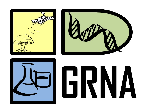Banca de DEFESA: EMILLY PINHEIRO DE OLIVEIRA
Uma banca de DEFESA de MESTRADO foi cadastrada pelo programa.STUDENT : EMILLY PINHEIRO DE OLIVEIRA
DATE: 27/10/2022
TIME: 08:30
LOCAL: Sala 345B - BMT2 / Campus Tapajós
TITLE:
SOIL-VEGETATION RELATIONSHIP IN FOREST FRAGMENTS OF ALTER DO CHÃO, PARÁ
KEY WORDS:
Amazon. Biomass. Forest. Physical attributes. Chemical attributes
PAGES: 73
BIG AREA: Outra
AREA: Ciências Ambientais
SUMMARY:
The soil is an important factor because it serves as a subsidy for plant growth from the support, besides incorporating physical and chemical attributes that are essential for ecological interactions. The present work aimed to determine the physical attributes (expressed by sand, silt and clay fractions), the soil chemical attributes (pH, nitrogen, phosphorus, potassium, sodium, aluminum, sulfur, boron, copper, zinc, manganese, iron, calcium, magnesium and organic matter), besides the potential acidity, aluminum and sodium saturation index, total and effective cation exchange capacity, base saturation, and soil base sum and relate them to vegetation structure variables (basal area and aboveground forest biomass) from two diametric classes (≥10 and ≥10 cm). The study area is located in an APA area in the Alter do Chão region, municipality of Santarém, state of Pará. Data collection was performed in 21 forest fragment plots, measuring 250 x 10 m, and soil sampling occurred in a 250 m path, comprising six collection points, with four depths (0-5 cm; 5-10 cm; 10-20 cm; 20-30 cm) for each plot. Physical and chemical analyses were performed by the Soil Department of the Federal University of Viçosa, following the protocols of Embrapa (2017) and the soil-vegetation interaction was tested through a principal component analysis (PCA). Among the soil attributes it can be concluded that they are mostly sandy, besides the high concentration of aluminum, acidic reaction and a dystrophic soil. The PCA reduced the data to two, and the principal component analysis showed a variability of the data of about 60%, and reduced the data to two components, of which there was a relationship with coarse sand, m% (negative correlation) and t, MO, Al³+, Ca²+, Mn, V, Mg²+, SB and K and clay (positive correlation). And the degree of correlation found demonstrated higher plant uptake sensitivity of the nutrients: Na, B, Al³+, H+Al, t, T, ISNa and MO. The estimate of BAS for the class ≥10 cm pointed an average of 150 Mg/ha (ranging from 79 to 243) and for the class <10, an average of 13 Mg/ha, (ranging from 3 to 32). Basal area ≥10 cm, on the other hand, averaged 14 m²/ha (ranging from 7 to 21) and class <10 cm averaged 3 m²/ha (ranging from 1 to 7). From the variables tested in the regression it can be concluded that soil attributes have an influence on BAS and basal area, for PC1 in the <10 cm class, obtaining statistical significance and explaining 19% and 21%, respectively of the variation between soil and vegetation structure.
COMMITTEE MEMBERS:
Externa ao Programa - 1962699 - LEIDIANE LEAO DE OLIVEIRA - nullPresidente - 1739961 - MANOEL ROBERVAL PIMENTEL SANTOS
Interno - ***.087.702-** - RAIMUNDO COSME DE OLIVEIRA JUNIOR - EMBRAPA
Externa à Instituição - SUSAN ARAGON CARRASCO - UFOPA




